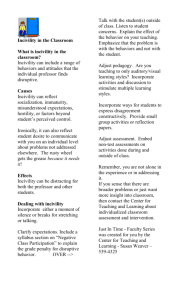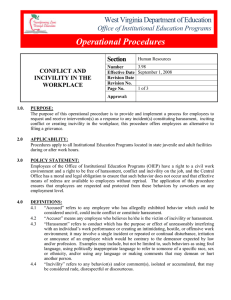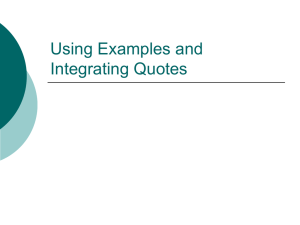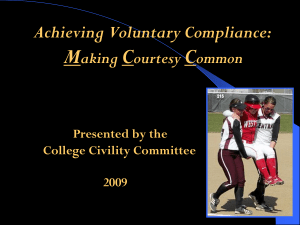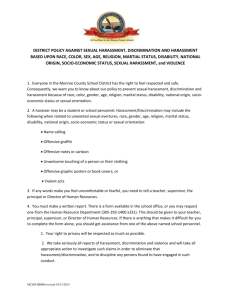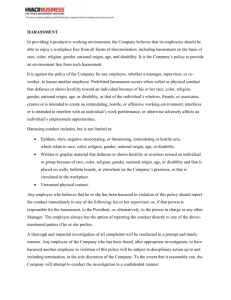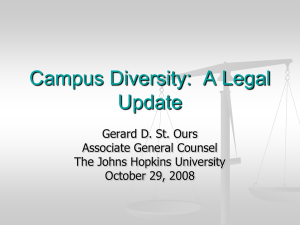Eros DeSouza
advertisement
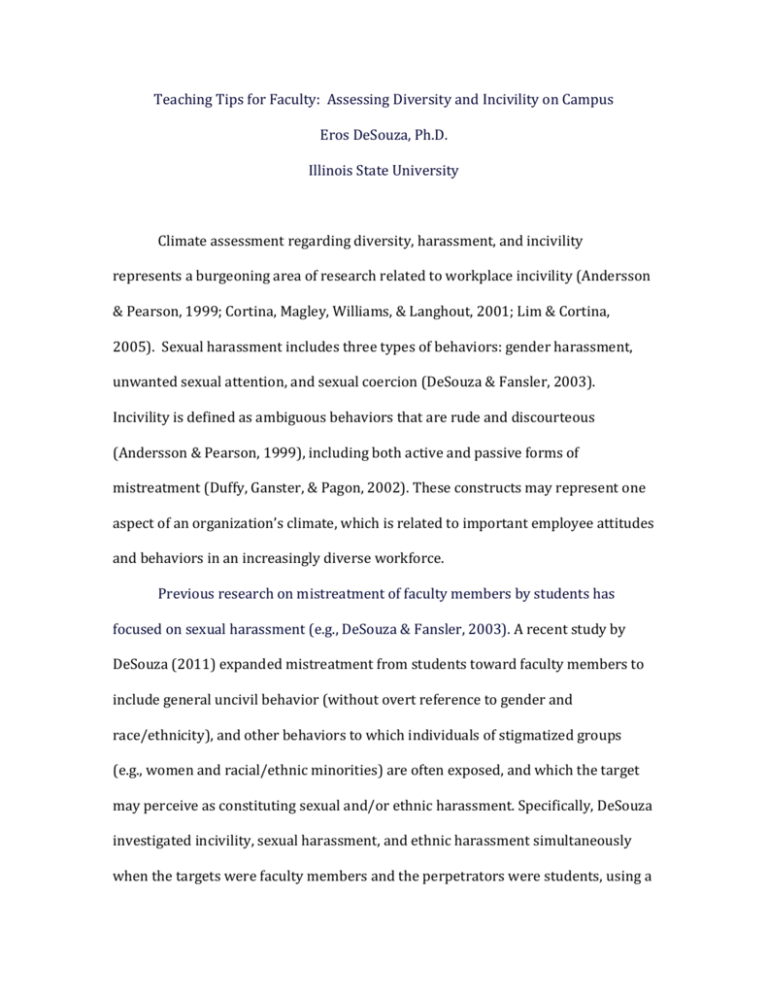
Teaching Tips for Faculty: Assessing Diversity and Incivility on Campus Eros DeSouza, Ph.D. Illinois State University Climate assessment regarding diversity, harassment, and incivility represents a burgeoning area of research related to workplace incivility (Andersson & Pearson, 1999; Cortina, Magley, Williams, & Langhout, 2001; Lim & Cortina, 2005). Sexual harassment includes three types of behaviors: gender harassment, unwanted sexual attention, and sexual coercion (DeSouza & Fansler, 2003). Incivility is defined as ambiguous behaviors that are rude and discourteous (Andersson & Pearson, 1999), including both active and passive forms of mistreatment (Duffy, Ganster, & Pagon, 2002). These constructs may represent one aspect of an organization’s climate, which is related to important employee attitudes and behaviors in an increasingly diverse workforce. Previous research on mistreatment of faculty members by students has focused on sexual harassment (e.g., DeSouza & Fansler, 2003). A recent study by DeSouza (2011) expanded mistreatment from students toward faculty members to include general uncivil behavior (without overt reference to gender and race/ethnicity), and other behaviors to which individuals of stigmatized groups (e.g., women and racial/ethnic minorities) are often exposed, and which the target may perceive as constituting sexual and/or ethnic harassment. Specifically, DeSouza investigated incivility, sexual harassment, and ethnic harassment simultaneously when the targets were faculty members and the perpetrators were students, using a behavioral approach that clearly included participants’ negative evaluation of their harassing experiences. The sample consisted of 257 full-time faculty members (90% White and 53% women) from a medium-sized state university in the Midwestern USA. DeSouza (2011) reported that 72% of the total sample had experienced some type of mistreatment from students during the past 2 years. Of these, 96% reported having experienced incivility, followed by sexual harassment (31%), and ethnic harassment (11%). These phenomena are not isolated, suggesting that sexual harassment and ethnic harassment are linked to incivility. Moreover, the findings showed that these behaviors were linked to negative job outcomes for both men and women, which may ultimately affect the quality of teaching as professors may experience burnout and leave the institution. DeSouza, Berube, and Schneider (2007) assessed university staff’s experiences of workplace incivility and linked their perceptions to turnover intentions. A random sample of 220 staff (173 non-minority and 47 minority) and 98 faculty (59 non-minority and 39 minority) completed an anonymous survey. The staff included three groups: administrative (n=52), professional (n=94), and clerical (n=74). DeSouza et al. found a significant interaction between ethnic minority status and job group, with racial/ethnic minority respondents in the clerical group reporting more incivility than their non-minority counterparts. For the other job groups, minority employees reported less incivility than non-minorities. The authors also used moderation analysis, which indicated that at lower levels of incivility, clerical workers reported the greatest intent to leave; as incivility increased, all job groups showed similar intentions to quit. These findings suggest that job type or group may be an even more important predictor of incivility experiences and the impact of such experiences on turnover intentions. Such climate assessment merits attention by university administrators interested in determining where additional training efforts should be focused to combat incivility. Informal observations and reports indicate that incivility is also present on Latin American campuses. Cross-cultural research on incivility is necessary to identify risk and protective factors across student and faculty groups, based on sexual orientation, race/ethnicity, socio-economic status, and disability.
